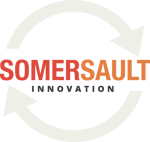Company Overview and Challenge
The energy industry is changing faster than ever as climate change drives government regulations for sustainability. To stay on the cutting edge, established energy providers need to embrace innovation and provide forward-thinking solutions.
For one Canadian nuclear power company, these regulations posed a significant challenge: How could they recondition their reactors to double their lifespan? This is a tall task for any nuclear plant, but the company was already dealing with a number of setbacks:
- Unplanned power outages stemming from poor maintenance workflows
- Frustrated leadership ready to see improvements
- Stalled projects due to ineffective communication
In order to fulfill the government-mandated nuclear reactor updates, the company needed to transform their internal operations — a task that’s easier said than done.
Stakeholders at every level of the organization were in agreement that something had to change, but they didn’t know where to start.
The Solution: Innovation from the Inside Out
The company hired Somersault Innovation to help them employ Design Thinking and get their nuclear reactor improvement project back on track.
Assembling And Training the Team
First, Somersault helped the company assemble a task force to research and diagnose the organization's barriers to change. By pulling in stakeholders from multiple areas of the company, the task force came prepared with diverse insights about existing operational challenges.
Once the task force had been selected, Somersault held an in-person training session to familiarize the team with the principles of Design Thinking. This included teaching them how to reframe the problem statement from, "How do we increase the number of improvement project we complete?" to a bigger, more human-centered question, “How do we make changes to empower front-line engineers with the capability to achieve industry-leading performance?”
Next, the team learned how to conduct human-centric research by:
- Learning from diverse perspectives
- Listening deeply for underlying clues
- Making connections between multiple problem areas
For the next four months, Somersault checked in with the team via virtual coaching sessions and an in-person workshop at the two-month mark to synthesize key insights.
Task Force Findings
The task force discovered three critical obstacles impeding the reactor improvement process:
-
The company’s front-line engineers and top-level leadership were both in agreement on how to achieve the company’s goals, but the messages were getting lost at the mid-level. Many of the mid-level managers had not come from an engineering background, and did not understand the “why” behind requests coming from both directions. Without this understanding, they were deprioritizing key activities.
-
A culture of fear had led many of the company’s operations and maintenance employees to practice "CYA". In other words, to avoid making a mistake, these employees were consistently seeking approval from front-line engineers before completing any projects. The approval-seeking process consumed much of the engineers’ time, making it impossible for them to spend time on necessary improvements.
-
Finally, the task force also discovered a major bottleneck in the training and certification process that was reducing the number of engineers allowed to perform improvements on the reactors.
Results
Somersault coached the team on how to rapidly implement solution ideas on a small scale that involved multiple stakeholders. This fast-cycle, iterative approach to implementation led to three clear solution areas:
-
Minimize misunderstandings across reporting lines by clarifying the "Why," in addition to the "What" and the "When" in internal communications.
-
Empower operations and maintenance employees to seek solutions without engineer approval
-
Implement a mentorship program that would allow all engineers in training to perform modifications on the nuclear reactors in the presence of a certified senior engineer
The company's executives were thrilled with the results, and implemented the task force’s suggestions right away. They even decided to activate another Design Thinking task force to help inform long-term company strategy.
Through making Design Thinking a priority, this company overcame major challenges and created change from the ground up. That's what Design Thinking is made for: solving complex problems. Do you have a problem that's holding you back? Get in touch for a Design Thinking consultation today.







